
—2025—
Wireless Sensing in IoT
Practical Tools
Wireless Sensing/Utilities

In the configuration methods and resources for Wi-Fi sensing hardware, we have systematically mastered the physical configuration methods of hardware devices. However, operating a mini computer still relies on a mouse, keyboard, and monitor. This method of operation is inefficient and becomes more inconvenient when facing bulk deployments. Therefore, we need to control and operate the mini computers remotely, typically using SSH software and switches. Next, we will specifically explain the remote connection methods and the use of the remote control software MobaXterm.
01#
Configuration Methods for Mini Computers
Mini PC Configuration
1.1 Enabling SSH Connection
Step 1: Open the terminal, the shortcut key command is ctrl+alt+T
Step 2: Enter the following command in the terminal
sudo apt-get update
sudo apt install openssh-server
# After installation, it will run automatically. To be safe, check the status of ssh
sudo ps -e | grep ssh
If “sshd” appears, it means it has started, and after installing ssh, you can use software for remote connection.
1.2 Static IP Configuration for Mini Computers
Step 1: Directly connect the network cable to the mini computer
Step 2: Open Settings – Network, then select the content as shown in the image below
Step 3: Open options and modify parameters: change the IP address as needed (subsequently connect through this IP; the first three digits of different mini computers’ IPs are the same, while the fourth digit is different; this allows control when multiple devices are connected simultaneously, record the IPs of different mini computers and label them on the mini computers), the mask is 255.255.255.0, and refer to the image for the rest
Step 4: Save
PS: No other operations are needed, and there is no need to refer to network materials related to modifying static IPs
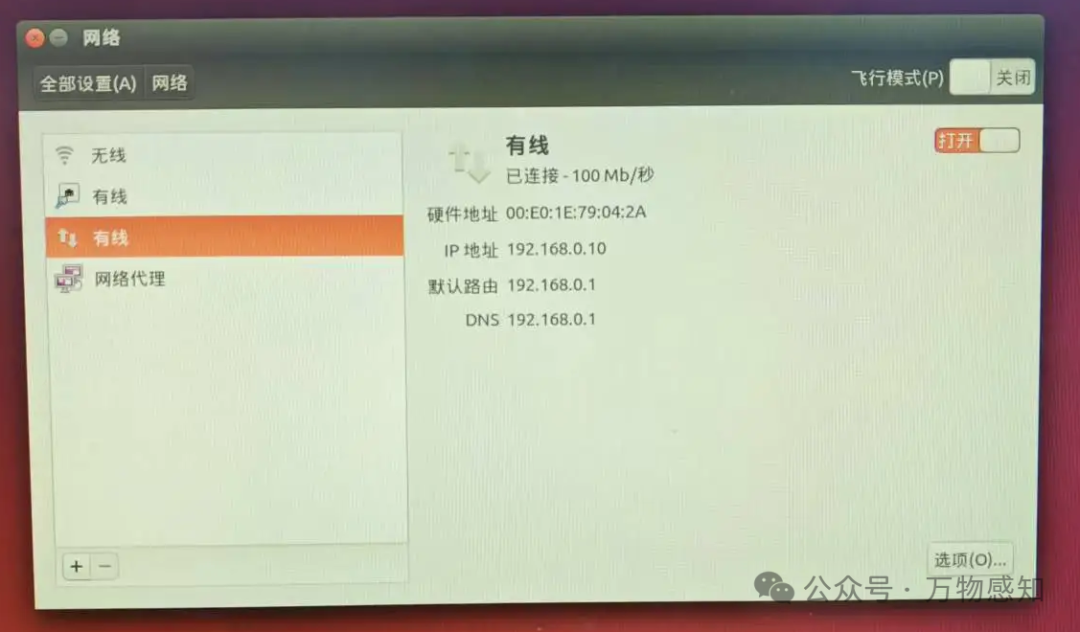
1.3 Connection Methods for Hardware Devices
To remotely control the mini computer via ssh, you first need to connect the mini computer and the personal laptop to the same local area network using a network cable. If using multiple mini computers, a switch can be used to connect the mini computers and the personal laptop within the local area network.
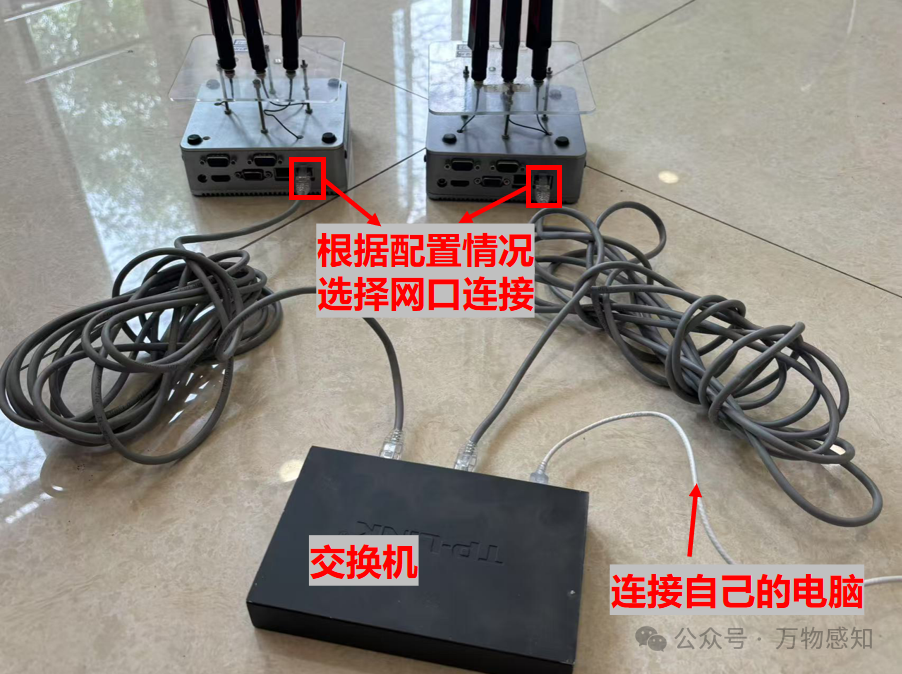
PS: It is important to note that if the mini computer has more than one network port, the specific port to connect to needs to be adjusted according to the actual configuration in 1.2 Static IP Configuration for Mini Computers.
02#
Configuration Methods for Personal Laptops
PC Configuration
Common SSH management tools include XShell (commercial license), PuTTY (lightweight classic), or Termius (cross-platform collaboration), etc. Here, we will describe the configuration method using MobaXterm as an example. The following is the official website link:
https://mobaxterm.mobatek.net/
3.1 Configuring the IP of Personal Laptop
Download MobaXterm on the operating machine PC, configure the network settings, and the general configuration steps are:
Step 1: Right-click the icon in the bottom taskbar, open network settings, click Ethernet settings, click change adapter options, and the following window will appear:

Step 2: Right-click Ethernet, select properties
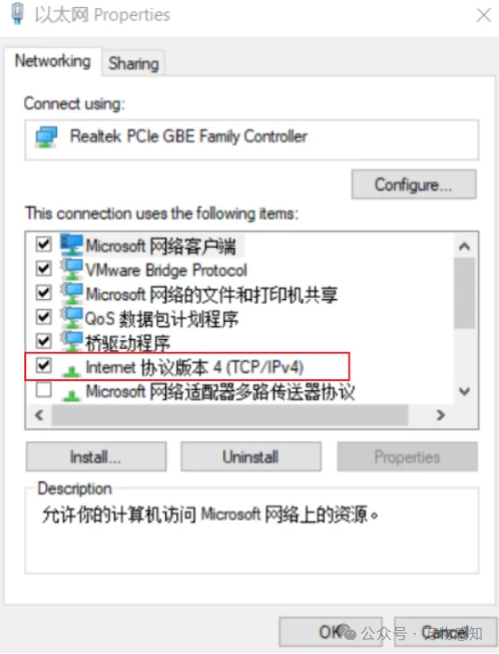
Step 3: Select Internet Protocol Version 4, click properties
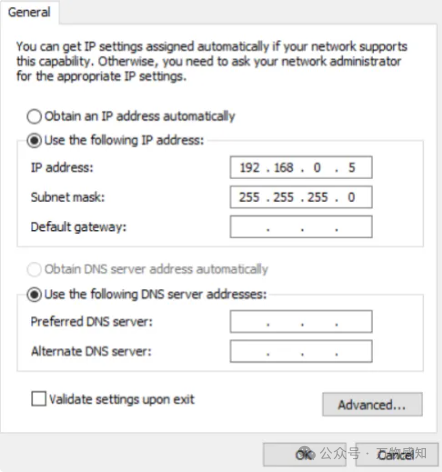
Modify the configuration of the personal laptop, ensuring that the first three digits of the personal laptop’s IP (192.168.0) match the first three digits of the mini computer’s IP in 1.2 Static IP Configuration for Mini Computers, while the fourth digit does not match any mini computer’s IP, subnet mask 255.255.255.0
2.2 MobaXterm Remote Connection
Open MobaXterm, click on the session at the top, select ssh, enter the IP of the mini computer to connect (see 1.2 Static IP Configuration for Mini Computers), and click OK to achieve remote connection to the device
03#
Using the CSI Tool
CSI Tool
The CSI Tool is designed for collecting Wi-Fi Channel State Information (CSI), supports Intel 5300 network cards, and is suitable for wireless sensing and positioning research. The official website link for this tool is as follows:
https://dhalperi.github.io/linux-80211n-csitool/
3.1 Control Connection
After establishing the SSH connection, you need to enter the username and password for the mini computer
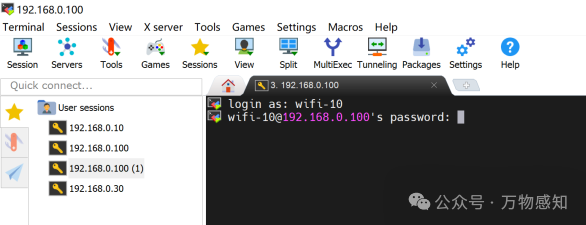
If the following display appears, the connection is successful
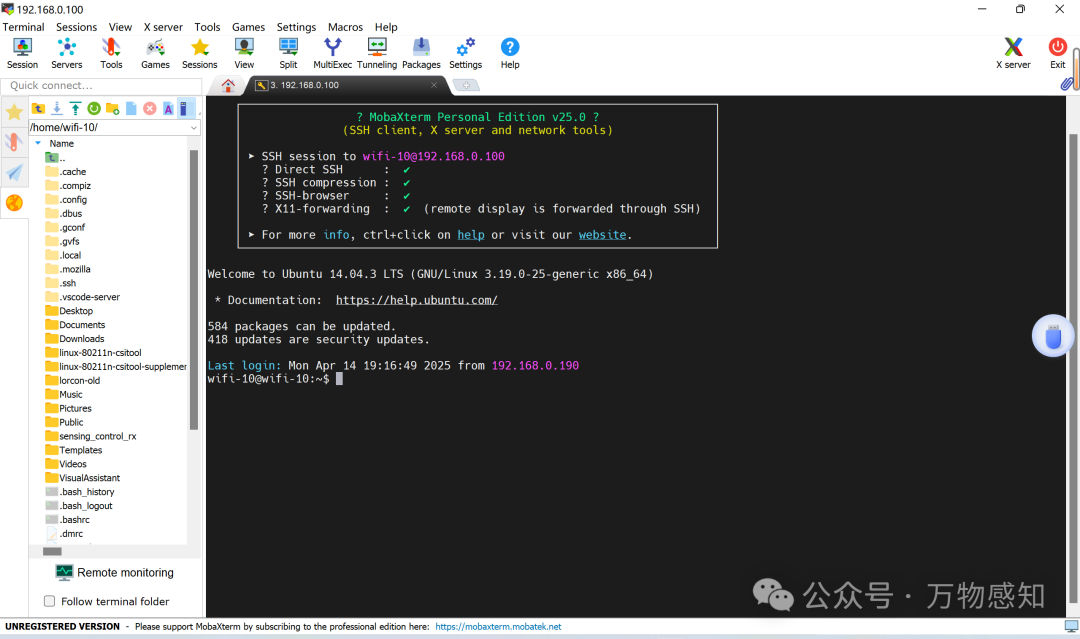
3.2 Workflow of the CSI Tool
After a successful connection, execute the following commands on both the transmitter and receiver to switch the path to the target location
PS: The receiver and transmitter refer to two different mini computers, and during control, you can connect to both devices simultaneously in MobaXterm by IP and control them separately
cd linux-80211n-csitool-supplementary-master/injectionPS: If you encounter permission issues when executing the first step on the transmitter and receiver, you can use chmod 777 + filename to grant permissions
3.2.1 Transmitter Control Code
./setup_inject.sh 64 HT20
sudo ./random_packets 10000 100 1 1000Parameter Explanation:
10000: Transmit 10000 packets
100: Each data packet size is 100Kb
1: Fixed value
1000: The time interval between packets is 1000 microseconds, assuming the required sampling rate is f, this value is 1e6/f
3.2.2 Receiver Control Code
./setup_monitor_csi.sh 64 HT20
sudo ../netlink/log_to_file log.datIn the above command, log.dat can be named according to user needs to distinguish different tests in the experiment
After configuration, first execute the receiver operation, then execute the transmitter operation to achieve the send-receive functionality
3.3 Downloading Data Files to Local
MobaXterm has a built-in file management function, simply drag the generated .dat file to your local folder on your computer
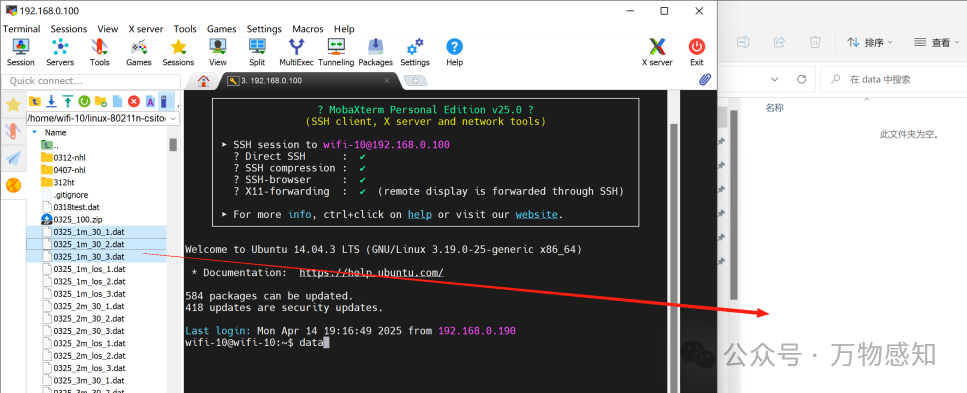
Text by gcw@All Things Perception
Layout by txy@All Things Perception